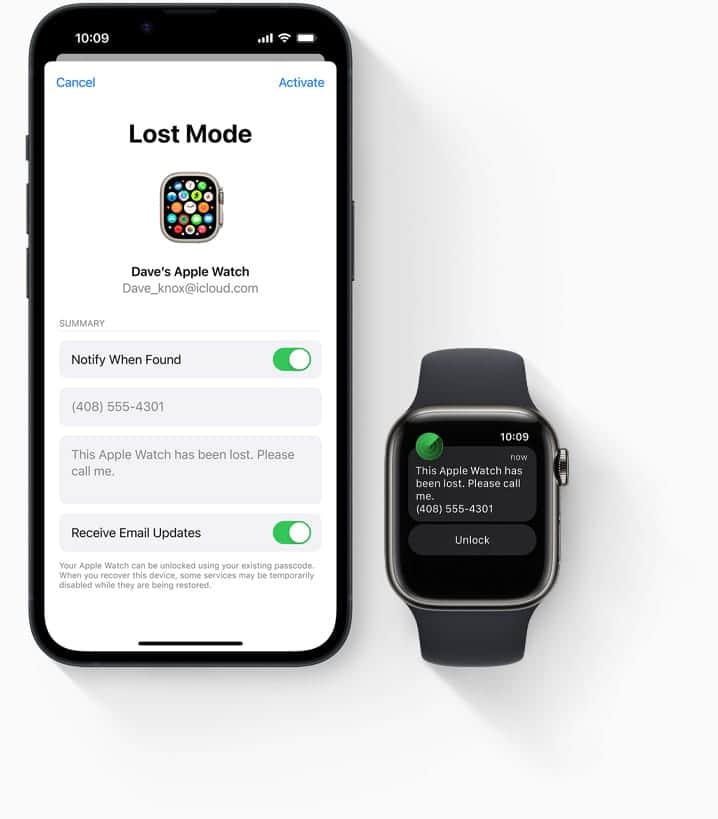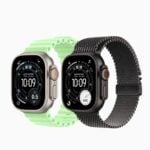You may have noticed that when you use your Apple Watch and iPhone together, your iPhone’s battery life may decrease faster. This is a valid observation because using both devices together drains more battery power. The reason for this is that the two devices are constantly communicating with each other using Bluetooth. The Apple Watch relies on the iPhone for some functions, which can impact power usage. To maintain good battery life for both devices, users can adjust settings, ensure they have the latest software updates, manage notifications, and close background apps to reduce unnecessary power usage. Understanding how the iPhone and Apple Watch interact is important for optimizing battery performance.

While the Apple Watch does contribute to some iPhone battery drain, it’s usually not significant in everyday use. By being mindful of usage patterns and settings, you can extend the battery life of both devices.
Does Apple Watch Drain Your iPhone Battery?
| Factors | Impact on iPhone Battery | Description |
|---|---|---|
| Apple Watch Model | Newer models generally have better battery efficiency. | Battery drain may be slightly less with a Series 8 than a Series 3. |
| Usage | More frequent use leads to higher battery drain. | Extensive app usage, GPS, cellular calls, and workouts will drain the battery faster. |
| Enabled Features | Certain features consume more battery. | Always-on display, background app refresh, and notifications can contribute to drain. |
| Bluetooth Connection Strength | Weaker connections require more power. | Maintaining a strong Bluetooth connection is important, but can impact battery life. |
| Background Processes | Running apps or background refresh can drain the battery. | Close unused apps and adjust background refresh settings to optimize battery usage. |
| Overall iPhone Battery Health | A degraded iPhone battery will drain faster. | If your iPhone battery health is below 80%, it might be time for a replacement. |
General Impact:
- Modern Apple Watches are designed to be energy efficient and typically have minimal impact on iPhone battery life during normal use.
- Extensive Apple Watch usage or enabled features can increase battery drain on the iPhone.
- Optimizing settings and maintaining good iPhone battery health can minimize the impact.
Key Takeaways
- Connecting an Apple Watch to an iPhone can impact the iPhone’s battery life.
- Regular software updates and correct settings can help optimize battery performance.
- Understanding how the Apple Watch and iPhone interact is crucial for effective power management.
Understanding Battery Dynamics Between iPhone and Apple Watch
When an iPhone and an Apple Watch pair up, they work together in ways that can affect how long each device’s battery lasts. This partnership is useful, but it can result in increased battery use on both devices.
How the Apple Watch Affects iPhone Battery Life
The Apple Watch connects to an iPhone using Bluetooth and Wi-Fi. These connections enable the two devices to communicate, sending notifications, call alerts, and other data back and forth. However, this constant communication can lead to more power use, which can drain the iPhone’s battery faster than if the Watch wasn’t connected.
For example, frequent updates of the watch face can consume more energy, as well as using the Watch for GPS and workouts. If the iPhone is always sending new information, like weather updates or fitness data, it’s working harder and therefore using more battery. Also, your WatchOS and iOS versions might impact how efficient this communication is, with some versions being more power-efficient than others.
Key Features Impacting Battery Utilization
Several features have a significant impact on battery consumption between the iPhone and Apple Watch.
- Bluetooth and Wi-Fi: These wireless connections are how your devices talk to each other. They consume power, especially when the signal is weak or if the devices are constantly searching for each other.
- Notifications: When apps send notifications to your Apple Watch, your iPhone also plays a role in this process, which uses battery. You can manage these by turning off notifications for certain apps.
- Apps: Apps installed on both the iPhone and Apple Watch can sync data, which can drain the battery. Consider adjusting these settings or removing unnecessary apps from your Watch.
- Background App Refresh: This allows apps on your Watch to update their content when you’re not using them. Disabling it for certain apps can save battery life.
- Workouts and GPS: Using the Apple Watch for tracking workouts or navigation uses GPS and other sensors, which can drain the iPhone battery faster, as it may aid in processing or relaying that data.
By understanding these dynamics, users can manage their devices better and keep their batteries running longer.
Tips for Optimizing Battery Performance
When your Apple Watch and iPhone start working together, battery life can take a hit. But there are smart ways to keep both devices running longer. Let’s explore how to make your battery percentage happy by managing settings and maintaining your gadgets wisely.
Adjusting Settings to Preserve Battery Life
Brightness and Notifications:
- Dim your screen: Less brightness means less power used. Swipe up on your iPhone or open the Control Center on your Apple Watch to lower brightness.
- Auto-Brightness: Turn this on to let your device adjust the screen based on surrounding light, which can save battery.
- Wake on Wrist Raise: Consider turning this off on your Apple Watch. It stops the screen from lighting up with each arm movement.
Connectivity and Location Services:
- Use Wi-Fi: On your iPhone, choose Wi-Fi over cellular data to reduce battery strain.
- GPS only when needed: On the Apple Watch, carry your iPhone for GPS uses; it saves your watch’s battery.
Notifications and Apps:
- Disable unnecessary notifications: Go to the Notifications section in the Settings app and switch off alerts for apps you don’t need constant updates from.
- Close unused apps: On your Apple Watch, press the side button, swipe on apps you’re not using, and close them.
Best Practices for Charging and Maintenance
Optimized Battery Charging:
- Turn it on: This iPhone feature learns your charging routines and waits to finish charging past 80% until you need to use it.
Battery Health and Maintenance:
- Check Battery Health: Use the Battery section in the Settings app on your iPhone. It gives you an idea of your battery’s condition.
- Regular Updates: Keep your devices updated. Software updates often include battery performance improvements.
Charging Habits:
- Avoid extreme heat or cold: Charge and use your gadgets in environments that are not too hot or too cold to prevent battery damage.
- Backup and Reset: If battery problems persist, back up your device and consider resetting it to factory settings, which can sometimes resolve hidden battery-draining issues. Use the Health app for backup assistance.
By following these tips, you can help ensure that your Apple Watch and iPhone maintain optimum battery performance, giving you more time to enjoy their features without constantly searching for a power outlet.
Frequently Asked Questions
Some iPhone users find their battery drains faster when connected to an Apple Watch. This section addresses common concerns and offers solutions to improve battery life.
What might cause my iPhone to lose battery more quickly when paired with an Apple Watch?
Certain settings and features on the Apple Watch and iPhone can lead to a faster battery drop. Turning on too many notifications, keeping multiple apps open, and using an intense workload between devices are common causes.
Can the Always-On feature of certain Apple Watch models impact my iPhone’s battery life?
Yes, the Always-On display requires more frequent updates from the iPhone, potentially increasing battery use. Disabling this feature might help save the iPhone’s battery life.
What tips are there to minimize battery drain on an iPhone when using an Apple Watch?
To reduce battery usage, users can disable unnecessary notifications, close apps not in use, turn off the Always-On display, and limit background refresh of apps.
How does the Apple Watch Ultra compare to other models in terms of iPhone battery consumption?
The Apple Watch Ultra has more functionalities, which might increase the iPhone’s workload, but actual impact on battery life will vary based on usage patterns such as GPS and cellular features.
Are there known battery issues with specific Apple Watch series that affect the iPhone?
Certain iOS updates have been reported to increase battery drain when paired with an Apple Watch, but this varies by update and user experience. Apple has released software updates to address these issues.
Could software updates influence the battery drain experienced by my iPhone when connected to an Apple Watch?
Yes, software updates can either improve or worsen battery performance. It is good to keep both devices updated and monitor any changes in battery life following updates.







